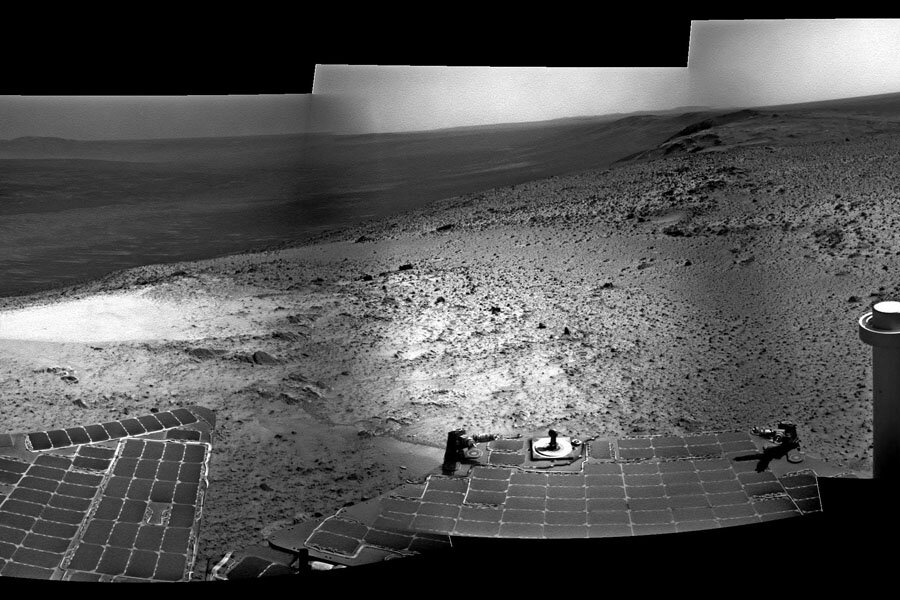Attention-span-challenged Mars rover reaches summit, snaps photo
Loading...
As the Opportunity rover struggles with ongoing problems to its Flash memory, the plucky Martian machine — almost at its 11th anniversary of operations on the Red Planet — has reached the summit of a crater rim, providing spectacular views of the area below.
The Jet Propulsion Laboratory is readying a fix to the rover’s memory, which is required to store images overnight while the rover sleeps. Controllers are still getting the data by making daily downloads before the sleep period, but it is having an effect on operations.
“The fix for the flash memory requires a change to the rover’s flight software, so we are conducting extensive testing to be sure it will not lead to any unintended consequences for rover operations,” stated John Callas, project manager for Opportunity at the Jet Propulsion Laboratory.
Opportunity’s latest amnesia problems first came to a head in the late summer, when the rover experienced frequent resets and was unable to do much science as a result. In September, JPL performed a long-distance memory reset that at first appeared to work perfectly.
But as 2014 wrapped up, the Flash problems became so frequent that NASA stopped using that kind of memory altogether, relying instead on another kind of memory called RAM. It should be noted that the rover still has been active during this period, including passing a milestone of 41 kilometers of driving on the Red Planet.
Computer World has a few details on the upcoming memory format. What’s worrying controllers is not so much the immense distance to the Red Planet — they are used to those sorts of procedures in this long mission — but more the danger of introducing a software update that could make the rover stop talking to Earth. So there are frequent simulations going on as NASA prepares a fix, which is reported to be taking place within a week if possible.
But Opportunity’s treks on Mars continue. The rover is now atop the Endeavour Crater’s rim at a spot nicknamed “Cape Tribulation”, named after one of the locations the explorer James Cook visited with HMS Endeavour during his New Zealand and Australia mission between 1769 and 1771.
This location is the highest point Opportunity reached during its 40-month exploration of Endeavour Crater. It’s sitting on a height roughly 440 feet (135 meters) above the plains and, after two lengthy drives Monday and Tuesday (Jan. 5 and Jan. 6) its odometer is currently at 25.8 miles (41.6 kilometers).
Opportunity’s next destination is called “Marathon Valley”, a spot that could have minerals soaked with water in the past (at least, according to pictures obtained from orbit). By the time the rover gets there, it should have passed a marathon’s worth of driving on the Red Planet.
Elizabeth Howell is the senior writer at Universe Today. She also works for Space.com, Space Exploration Network, the NASA Lunar Science Institute, NASA Astrobiology Magazine and LiveScience, among others. Career highlights include watching three shuttle launches, and going on a two-week simulated Mars expedition in rural Utah. You can follow her on Twitter @howellspace or contact her at her website.
Originally published on Universe Today.





